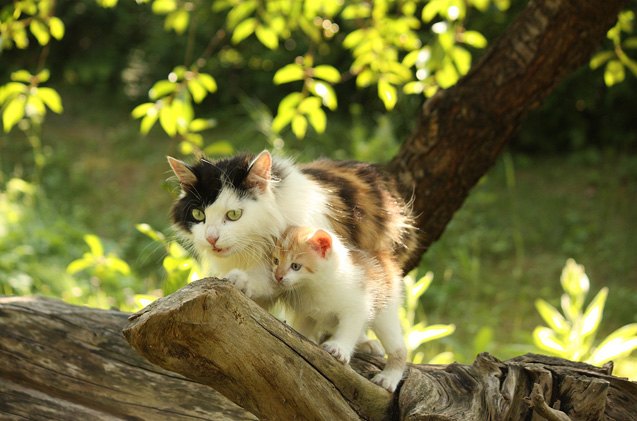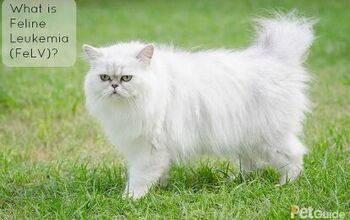What Is Feline Distemper?

Feline Panleukopenia virus, which is also known as FPV and feline distemper (though it isn’t related to canine distemper), is highly contagious and life-threatening.
By understanding feline distemper, you can help prevent it.
Transmission
Feline distemper can be spread via direct contact with an infected animal or his secretions, including the blood, urine, and feces. Fleas can also transmit the virus. It can even be spread through use of contaminated bedding, litter boxes, and food dishes. Individuals who have treated a cat with feline distemper can then expose other cats if they don’t properly wash their hands or clothes first.
Related: Two Infectious Illnesses You Should Know About
The virus may be transmitted to kittens before they’re born, as well as shortly after. In these cases, mortality is 90 percent. Those kittens that recover from neonatal infection might have cerebellar brain damage that results in an uncoordinated gait when they start walking.
Felines who end up surviving the virus become immune to it, but they can end up shedding the virus for a few weeks, exposing other cats to it. An infected cat could shed feline distemper in his urine and feces for up to 6 weeks post-recovery.
Those at highest risk for becoming seriously ill from this virus are kittens between two and six months of age. Cats with compromised immune systems, as well as pregnant cats, are also at a greater risk of severe symptoms. Adult cats who get feline distemper may experience mild symptoms or it may go unnoticed.
Symptoms of Feline Distemper
FPV is a leading cause of death amongst kittens. Because it affects rapidly dividing blood cells, especially those in the bone marrow and intestinal tract, as well as stem cells in fetuses, it can result in anemia and make the body susceptible to other viral and bacterial illnesses and infections.
Related: Feline Vaccinations: Which Ones Are Really Necessary?
Within two to 10 days after being exposed to the virus, a cat will begin showing symptoms of acute illness. These may include severe apathy, fever up to 105°F (40.5°C), and loss of appetite. Repeated vomiting that brings up yellow-stained, frothy bile is also common, and the cat may be crouching in pain with his head just a few inches over a water or food bowl. In the event a cat is able to drink water, he’ll immediately vomit, and he’ll cry out as a result of pain within the abdomen.
Diarrhea may also appear early in the progression of the virus, though it frequently occurs later. Stools are typically streaked with blood or yellow in color.
The onset of the virus can be sudden in both young kittens and some older felines, so an owner may not even know the pet is sick until it’s too late or the animal has died. Secondary bacterial infections are common, and these may also result in death.
Below is a list of some of the other symptoms associated with feline distemper:
- Dehydration
- Weight loss
- Rough fur
- Depression
- Some felines may hide
- Keeping the feet tucked under the body for extended periods
- Resting the chin on the floor for extended periods
Treatment of FPV
Immediate treatment is necessary to save lives. Addressing dehydration, as well as giving a cat antibiotics to prevent infections, may be part of the treatment plan, in addition to supportive care in a warm, quiet space separate from other animals.
The FPV virus will depress your cat’s mental and physical health, so he’ll need to receive plenty of comfort and affection from you until he’s cured.
If a cat is promptly and effectively treated and able to survive the first 48 hours, it’s likely that he’ll fully recover with lifetime immunity. However, it might take weeks for the cat to be completely healthy again.
Feline Panleukopenia Virus Prevention
Once in the environment, feline distemper is very hardy. It will survive in cracks, furnishings, and carpeting for over a year at room temperature, and it can survive at lower temperatures as well. Strict hygiene is necessary to prevent the spread of the virus and to kill it from the environment.
This virus is resistant to household cleaners. The most effective way to destroy it is with a bleach solution of 1/2 cup of bleach in a gallon of water. Use the solution for 10 minutes on floors, litter boxes, cages, etc. To be sure feline distemper is completely out of your environment, though, discard your pet’s belongings and replace them with new ones.
The best way to prevent an infection is to have your cat vaccinated against feline distemper. Also, keep your cats indoors to prevent them from encountering sick cats outside.

Lisa Selvaggio is a freelance writer and editor, and our resident cats-pert, with certifications in pet nutrition and pet first aid. She enjoys producing content that helps people understand animals better so they can give their pets a safe and happy home.
More by Lisa Selvaggio























